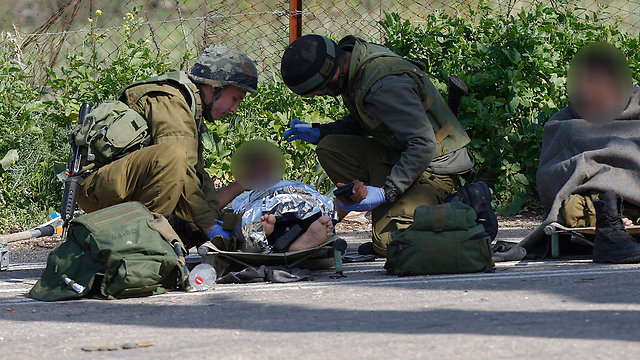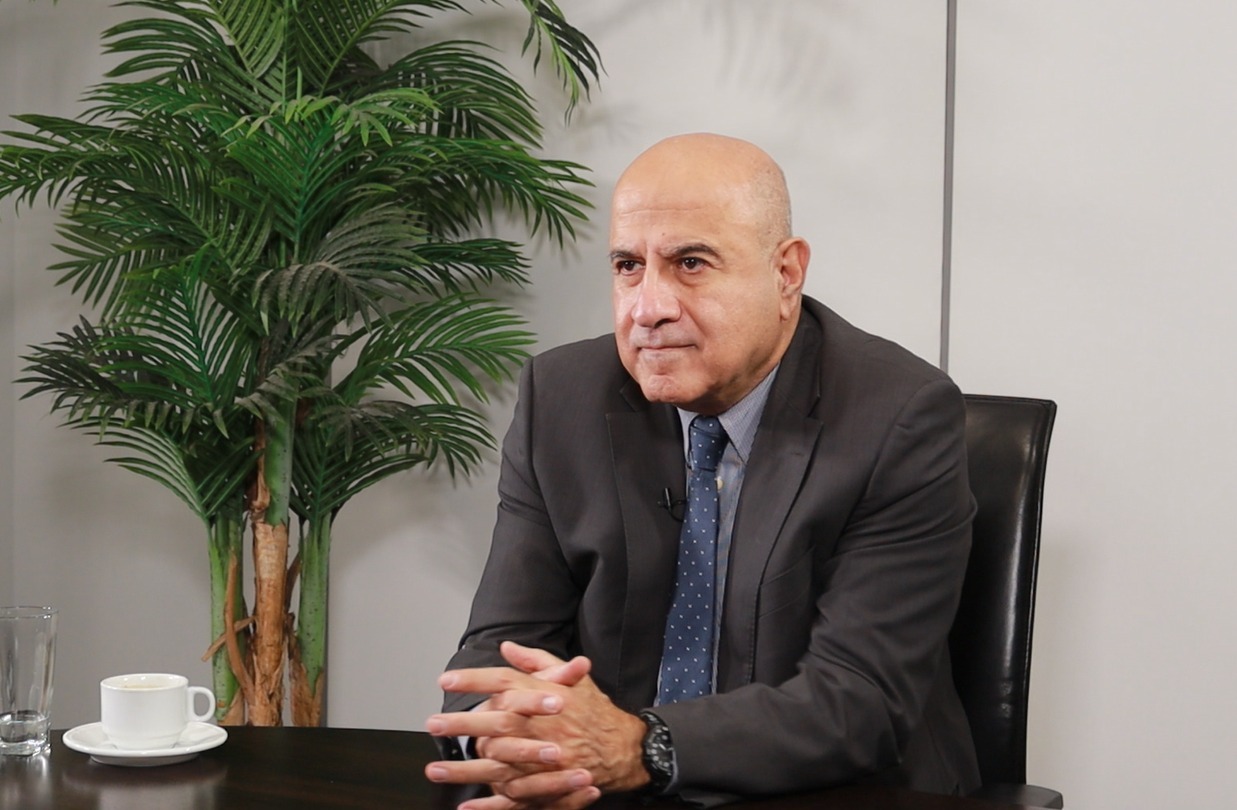IDF publishes initial investigation into Hezbollah attack on convoy
Yoav Zitun, Itamar Eichner/Ynetnews
Published: 01.29.15 / Israel News
Convoy carried reinforcement soldiers who were on a tour to familiarize unit with local terrain; civilian vehicle caused convoy to halt at military checkpoint, and Hezbollah identified opportunity to attack.
An initial investigation into the fatal Hezbollah attack on an IDF convoy near the Lebanese border on Wednesday has revealed that an unarmored IDF convoy carrying soldiers unfamiliar with the local terrain were allowed into an area with known exposure to enemy fire.
Half an hour passed from the moment five unarmored IDF vehicles carrying a group of IDF officers from the Givati brigade drove up to Mount Dov near the border with Lebanon until the moment anti-tank missiles sent by Hezbollah were launched towards them.
3D attack simulation
There was no prior intelligence pointing to an impending attack and the incident resulted in the deaths of two IDF soldiers and, later on, the death of a UN peacekeeper in IDF cross-fire.
The Investigation: Step by step
11:00 am: Five military vehicles, including two Jeeps and three unarmored Isuzu D-MAX pick up trucks, began the drive up to posts positioned at the top of Mount Dov. After turning left at the tank intersection, the convoy drove 400 meters towards the direction of Mount Dov’s military back road. The vehicles managed to drive another 300 meters, ascending the mountain, but turned around after receiving an order from the commander of the Hiram brigade to head back.
11:30 am: A Hezbollah cell launched six anti-tank missiles towards the convoy. Three of the missiles hit the convoy of unarmored vehicles and one hit a house in the nearby village of Ghajar. The first missile directly hit one of the unarmored vehicles, instantly killing Captain Yohai Kalangel, 25, and Sergeant Dor Nini, 20.
According to the initial military investigation into Wednesday’s Hezbollah attack, the IDF convoy of five cars was carrying officers of the Givati Brigade’s Tzabar unit which arrived in the north on Wednesday morning to reinforce units in the area.
The goal of the convoy that morning was to become familiar with the local terrain which is usually managed by the Harav unit.
After the convoy made a left turn at the tank intersection on route 99, which stretches from the Hermon to Kiryat Shmona, on to a civilian road that leads to Ghajar, the convoy continued for another 400 meters northward bound.
Mount Dov’s military back road is considered to be less vulnerable to anti-tank missiles – it was paved after the IDF withdrawal from southern Lebanon in 2000.
As stated, the convoy began its ascent of the mountain but was told to turn around after 300 meters – the order was given by the commander of the unit which manages the area, Colonel Dan Goldfus.
Preliminary investigations reveal that the order give by Colonel Goldfus was most likely made because of technical considerations or because of a schedule relating to operational discussions and not because the convoy included unarmored vehicles.
As ordered by the commander, the convoy descended Mount Dov and began returning to the intersection which connects the local road leading to Ghajar and the military back road at Mount Dov.
A military checkpoint had been established in the area 10 days earlier, including armored personnel carrier (APC), after the Israel attributed attack in Quneitra which killed several Hezbollah members and an Iranian general.
The checkpoint was created in order to prevent citizens who are not residents of Ghajar to drive towards the village, and by doing so, to limit the threat of missiles hitting civilian vehicles – a direct threat as Ghajar is close to the Lebanese town of Marjayoun.
On its way back from the Mount Dov back road, the convoy stopped at the checkpoint but was delayed by a civilian car whose driver spoke with the soldiers at the checkpoint.
It is at this point that the IDF investigation believes that Hezbollah operatives, most likely from the nearby Lebanese town of Khiam, had noticed that the convoy had stopped. According to the investigation, the Hezbollah operatives had likely been tracking the convoy’s drive up Mount Dov and were waiting for it to return to the road leading to Ghajar.
The Hezbollah officers took advantage of the stopped convoy and launched the first anti-tank missile at the group of IDF vehicles. The missile hit one of the Isuzu D-Max pickups which carried Captain Kalangel and Sergeant Nini – instantly killing them.
The rest of the commanders within the convoy immediately understood they were under fire and, in adherence with operational guidelines, evacuated their vehicles. A military jeep was then hit by a second missile and erupted in flames but it had already been evacuated. Seven soldiers were lightly wounded from shrapnel – avoiding a more dangerous fate by evacuating their vehicles.
The Hezbollah operatives continued launching Cornet missiles at the convoy, which have a 5 kilometer range. Three of the missiles missed the convoy and another missile hit a house in Ghajar – no individuals were wounded. The IDF did not know at that point if the house had been targeted or if the hit was a misfire.
The major forces in the Galilee division, trained and prepared to deal with kidnapping situations, began bombing in the area in order to prevent the possibility of a combined attack that could lead to a kidnapping. At the same time, the IDF fired about 100 artillery shells from tanks towards Hezbollah positions in the town of Marjayoun.
One IDF shell hit UNIFIL forces and killed a Spanish peacekeeper. The IDF offered its regret for the hit and was in communication with UN representatives during the incident.
An hour later, Hezbollah fired a single mortar shell at Mount Dov. The shell fell in an open area and did not cause damage or injury.
Meanwhile, IAF aircraft hit deeper Hezbollah targets within Lebanon.
Regarding the fact that the convoy included unarmed vehicles, the IDF said in response that there is a 10 kilometer stretch along the border with Lebanon, reaching from Rosh HaNikra to the Hermon, that is vulnerable to Hezbollah fire – including civilian roads and security areas close to the fence.
“It is not possible to take the entire northern area close to the border and 50 kilometers south. Cars driving in Metula can be shot at using automatic weapons from the Lebanese side,” the IDF said in a response. “Along with that, many considerations were taken into account in order to allow the free movement of citizens and daily life along side high readiness and deployment of forces that saved many potential Hezbollah targets. Regarding the incident, lessons will be learned after a full investigation.”




















